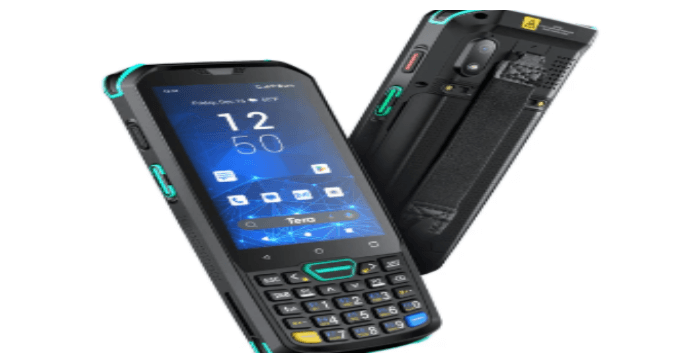Android Barcode Scanners: Enhancing Logistics and Shipping Processes

The Crucial Role of Barcode Scanners in Modern Logistics
In today’s fast-paced business landscape, logistics and shipping are critical for success. Speed, accuracy, and efficiency are key to meeting customer demands and staying competitive. Android barcode scanners have become indispensable tools, transforming how businesses manage their logistics and shipping operations. These devices streamline processes, reduce errors, and enhance overall productivity, providing a significant advantage in the demanding world of supply chain management.
Understanding the Functionality of Barcode Scanners
A barcode scanner, also known as a barcode reader, is a crucial piece of hardware used to scan and decode barcode symbols. Barcodes are visual representations of data, typically in the form of parallel lines or dots, that store information about products, items, or entities. The scanner emits a light source onto the barcode, capturing and decoding the reflected light to extract the encoded data.
How Barcode Scanners Work: A Step-by-Step Breakdown
- Scanning: The scanner emits a light source, such as a laser or LED, onto the barcode.
- Decoding: A sensor in the scanner detects variations in light intensity as it moves across the barcode, representing the barcode pattern.
- Data Conversion: The scanner converts the light patterns into an electrical signal, processed by the scanner’s internal electronics.
- Data Interpretation: The internal electronics interpret the electrical signal to decode the barcode’s data, which is alphanumeric.
- Output: The decoded data transmits to a computer, POS system, where it can be used for inventory tracking.
Types of Barcodes Commonly Used
- UPC (Universal Product Code): Primarily used in retail for product identification.
- QR Code (Quick Response Code): A two-dimensional barcode capable of storing more data than traditional barcodes.
- Code 128: Used in logistics and shipping for encoding alphanumeric data.
Benefits of Using Android Barcode Scanners in Logistics and Shipping
Android barcode scanners offer a multitude of advantages that directly translate into improved logistics and shipping processes. Below are key benefits:
Enhanced Efficiency in Warehouse Operations
Barcode scanners significantly improve warehouse efficiency through automation. They reduce the likelihood of mistakes, expedite warehouse processes, and improve real-time visibility. This standardization facilitates consistent and efficient procedures.
Reduced Labor Costs Through Automation
By automating data entry and streamlining processes such as picking, barcode scanners reduce the need for manual labor, leading to significant cost savings. Managers can also track worker performance to identify areas for improvement.
Real-Time Data for Better Decision-Making
Barcode systems provide real-time updates to warehouse management systems (WMS), offering immediate visibility into operations, pick rates, and inventory levels. This data-driven approach enables informed decision-making and optimized resource allocation.
Minimized Training Time for New Staff
User-friendly interfaces and straightforward processes reduce the time required for new staff to learn the system. This allows employees to quickly become productive, contributing to daily operations more efficiently.
Improved Accuracy and Precision in Inventory Management
Inventory scanners ensure precise data capture for inventory-related tasks, reducing errors and improving stock level reliability. Accurate scanning leads to more reliable stock levels and accurate records.
Increased Speed and Efficiency in Order Fulfillment
These scanners expedite inventory management processes such as receiving, picking, and packing, streamlining operations and improving productivity.
Facilitating Real-Time Inventory Tracking
Warehouse barcode scanners enable real-time tracking of inventory, providing insight into stock movement and reducing the risk of stockouts.
Cost Reduction Through Streamlined Operations
Improved accuracy and efficiency lead to fewer errors and reduced operational costs related to returns, order fulfillment, and labor.
Enhanced Customer Satisfaction Through Accurate Deliveries
The ability to process orders quickly and accurately ensures timely product delivery, enhancing customer satisfaction and loyalty.
Streamlined Operations and Standardized Processes
Implementing barcode technology standardizes inventory management processes, resulting in a more organized and efficient warehouse operation.
Seamless Integration with Existing Systems
Inventory scanners can seamlessly integrate with existing inventory or warehouse management systems, ensuring smooth data flow across various business functions. By connecting with warehouse management systems (WMS), Android barcode scanners create a interconnected operation.
Read also: Innovative Packaging Technologies for Staying Ahead of the Curve
Implementing Android Barcode Scanners in Your Business
Integrating android barcode scanners into your logistics and shipping operations is a strategic move that requires careful planning and execution. Here are key steps to ensure a successful implementation:
Assessing Your Specific Warehouse Needs
Begin by evaluating your current warehouse processes. Identify areas bottlenecks occur and where barcode scanners can have the most impact, like inventory management, order picking, packing, and receiving. A clear understanding of these needs will guide the selection of the right scanner types and integration strategies.
Selecting the Appropriate Scanner(s)
Choose scanners that align with your specific workflow and barcode types. Consider factors such as scanning range, durability, and connectivity options.
Training and Familiarization for Warehouse Staff
Provide training to warehouse staff on using the barcode scanners and interpreting the captured data. This ensures they understand the technology’s functions and barcode scanning techniques.
Creating and Applying Barcode Labels
Ensure barcodes are clear, well-placed, and easy to scan on products, bins, shelves, and other relevant items. Consistent labeling is crucial for accuracy and efficiency.
Testing and Calibration of Scanners
Before full deployment, thoroughly test barcode scanners to identify and resolve potential issues. Calibration ensures reliable performance and accurate data capture.
Monitoring and Optimization Post-Implementation
Implement ongoing monitoring and optimization of barcode scanner usage. Regularly assess performance to identify areas for improvement and ensure operational efficiency.
Types of Android Barcode Scanners
Android barcode scanners come in various forms, each designed to cater to different operational requirements and environments.
Handheld Scanners
These are compact, portable devices designed for ease of use. They typically feature a built-in scanner and a user-friendly interface, making them ideal for a variety of warehouse tasks.
Mobile Computers
Also known as handheld terminals, these devices combine scanning capabilities with the functionality of a computer. They are equipped with wireless connectivity, allowing real-time data transfer.
Wearable Scanners
These scanners are designed to be worn on the hand or wrist, providing hands-free scanning and enhanced mobility. They are particularly useful for tasks requiring frequent scanning while handling items.
Applications of Android Barcode Scanners in Logistics and Shipping
Android barcode scanners find applications across various stages of the logistics and shipping process.
Receiving and Put-Away
When goods arrive at the warehouse, scanners quickly verify the contents against the purchase order, ensuring accuracy and updating inventory records in real-time. This helps to quickly direct the new inventory in the warehouse. Items are then assigned to their designated storage locations by scanning the barcode on the items.
Inventory Management
Barcode scanners facilitate real-time tracking of inventory levels, reducing manual data entry and minimizing errors. This accuracy optimizes stock levels.
Order Picking and Packing
When fulfilling orders, scanners guide pickers to the correct items and verify that the right products are selected. Scanners then ensure items are correctly packed.
Shipping and Delivery
Scanners verify the contents of shipments, generate shipping labels, and track packages throughout the delivery process. The real time tracking improves transparency and reliability.
Real-World Examples of Improved Efficiency
Implementing Android barcode scanners has led to significant improvements for countless businesses.
Reduced Order Fulfillment Times
By automating the picking and packing process, companies have seen a substantial reduction in order fulfillment times, leading to faster delivery and improved customer satisfaction.
Improved Inventory Accuracy
Real-time tracking of inventory levels has minimized stockouts and overstocks, helping businesses maintain optimal stock levels and reduce holding costs.
Lowered Operational Costs
The reduction in manual labor and human error has led to significant cost savings, attributed to streamlined processes and improved efficiency.
Enhanced Data Visibility
Detailed data capture and real-time reporting provide valuable insights into warehouse operations, enabling better decision-making and proactive issue resolution.
For those seeking reliable barcode scanning solutions, android barcode scanner are an excellent choice.
By embracing this technology, businesses can not only improve their current operations but also position themselves for future growth in the dynamic world of logistics and shipping. Properly implemented Android barcode scanners improve operations and create a future-proof supply chain.






